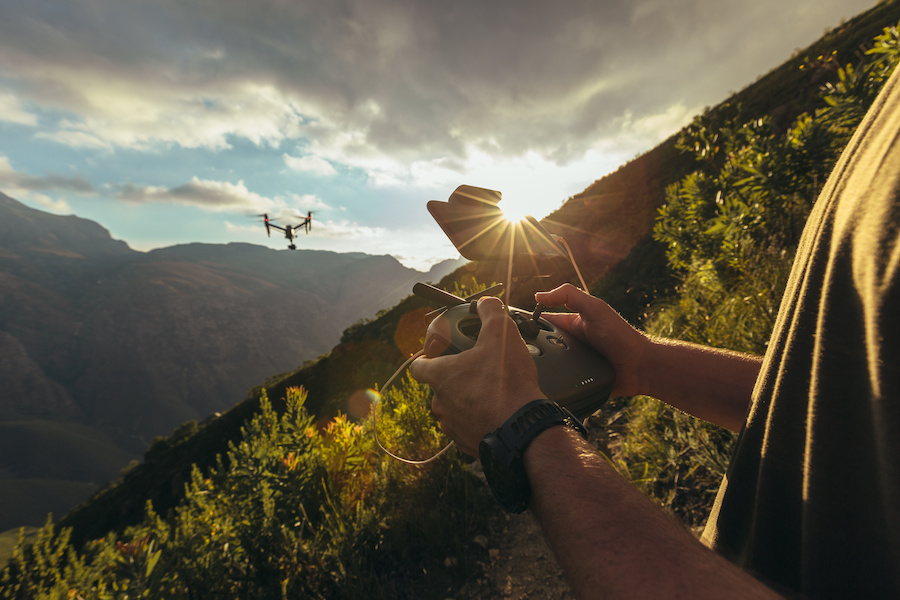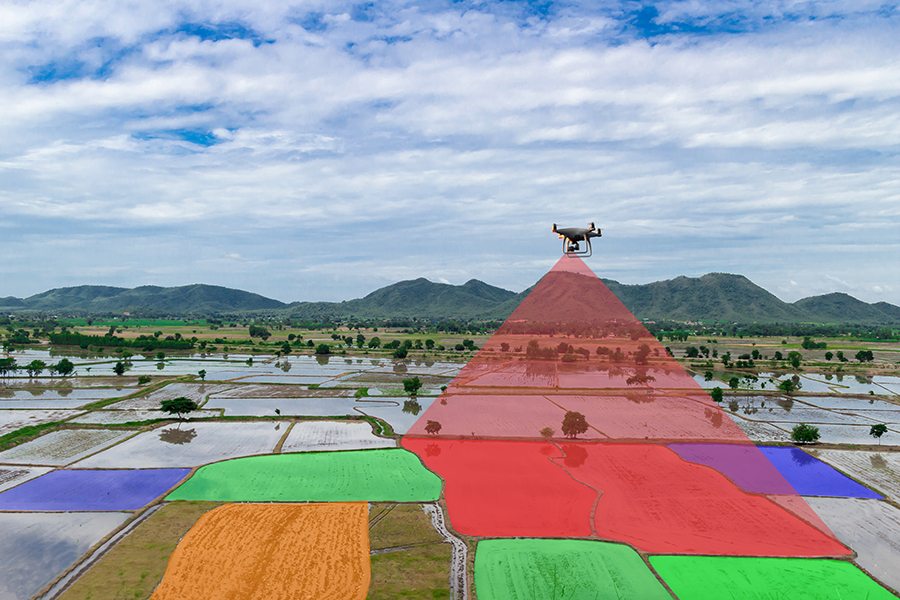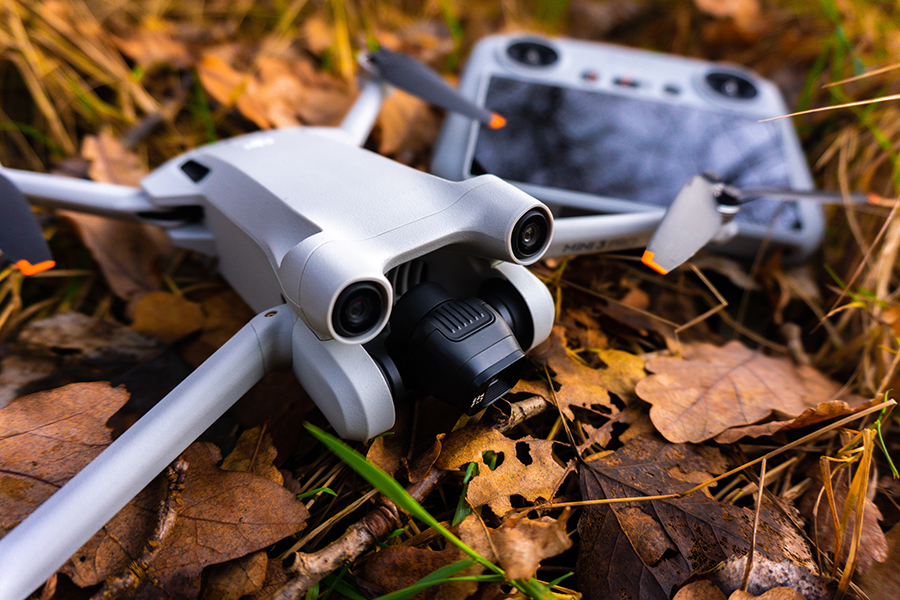In some cases, the adherence of the FAA to strict drone rules has to give way to matters related to public safety. This includes allowing drone pilots to operate beyond the limits of visual line of sight – one of the longest-standing restrictions of drone flight.
Under select circumstances, the FAA allows drone pilots working under public safety agencies to operate a drone beyond visual line of sight (BVLOS). What are the terms for securing a BVLOS waiver and how does one go about it? Does this apply to drone pilots licensed under Part 107?
An FAA COA is a pre-requisite
Let’s start with the bad news – to apply for a BVLOS waiver for public safety, you need to be flying under an FAA COA. This means that a drone pilot flying under Part 107 rules cannot just apply for a BVLOS waiver and claim that they are doing search and rescue operations.
To make this easier to understand, let’s quickly go over the differences between a Part 107 license and an FAA COA. A Part 107 drone license is granted to any drone pilot who wishes to fly drones for commercial purposes and who can satisfy the requirements of the FAA COA. This includes passing a 60-item multiple-choice knowledge test covering various aviation-related topics. As a testament to how relatively simple this process is, hundreds of thousands of drone pilots have already been granted Part 107 certification.
An FAA COA, on the other hand, is a lot more selective. It is normally only granted to government agencies that need to use drones as a part of their regular functions. Applying for an FAA COA is a long and tedious process. This includes providing details on how the agency plans to use drones, which drones will be used, and the training standards they will implement for their drone pilots.
This means that BVLOS waivers will only be granted to drone pilots who are part of government-recognized public safety agencies. The usual examples include first responders, search and rescue teams, police departments, and firefighters. Right now, there is no provision yet for granting emergency BVLOS waivers to Part 107-licensed drone pilots.
Situations where a BVLOS waiver may be granted
The official name for this kind of waiver is a “First Responder Tactical Beyond Visual Line of Sight” or TBVLOS waiver. The FAA describes a situation where BVLOS may be allowed to involve “extreme emergencies to safeguard human life”. They go on to cite examples, such as:
- Doing an aerial search for a burglary in progress
- Assessing the scene at a large structural fire
- Looking for a missing person in a heavily forested area
As the name of the waiver implies, deploying a drone in situations similar to those listed above gives responders a tactical advantage. There have already been a lot of well-documented cases of drones being used to quickly locate missing people or to develop a strategy for disabling an active shooter. A TBVLOS waiver simply extends the reach of these benefits to allow for even faster emergency response.
Flight conditions under a BVLOS waiver
While it is easily apparent how useful a drone can be in an emergency, the FAA still recognizes the risks of flying a drone at BVLOS conditions. Even when flying an emergency response operation, a drone pilot must be wary of drone accidents related to stationary structures and other aircraft.
When a TBVLOS waiver is granted, it comes with the following conditions:
- The drone must remain within 1500 feet of the drone pilot.
- The drone pilots must return to within visual line of sight operations as soon as practical or once the emergency situation has passed.
- The drone cannot fly over the 400 feet AGL hard ceiling for drone flight.
- The drone cannot fly higher than 50 feet above or more than 400 feet laterally of the nearest obstacle when flying under BVLOS.
- A LAANC authorization is no longer necessary when a TBVLOS waiver has been granted. However, a drone still should not go higher than the prescribed hard ceiling for drone operations when flying in controlled airspace.
- Operations beyond 400 feet AGL will only be allowed by filing for a Special Government Interest (SGI) waiver. This waiver can be requested by a pilot flying under an FAA COA or a Part 107 license.
- Operations at night are allowed during emergency situations as long as the drone pilot complies with the provisions for night operations under their agency’s COA.
All these conditions will be detailed on the copy of the TBVLOS waiver that will be granted by the FAA.
One thing we need to emphasize is that the TBVLOS waiver is NOT intended for time-critical waiver requests. Instead, this is for public safety agencies who want to file a waiver request ahead of an actual emergency. For an emergency situation that is already happening or about to happen, the FAA offers the Special Government Interest (SGI) expedited waiver process.
How to apply for a TBVLOS waiver
1. Initial Request
The initial request for a TBVLOS waiver must be submitted to the FAA via e-mail to [email protected]. This only starts the request process. In this step, pertinent details such as the following must be provided:
- Your existing COA number
- A summary of the proposed operations including the required conditions, a description of what you intend to do, information on the drone (model, serial/registration number), and an identification of the operational area.
The concept of operations must first be approved by the FAA before moving on to the next step.
2. COA Application for TBVLOS Waiver
Once approval of the concept of operations has been secured, the request for TBVLOS waiver must be filed using the COA Application System (https://caps.faa.gov). Make sure to mention that you are applying for a TBVLOS 91.113 waiver.
If successful, you should be granted a signed FAA Form 7711-1 (COA/Waiver Form). Any provisions or conditions for the waiver will be provided in the waiver form. The drone operator should keep a copy of both the COA Application and the FAA Form 7711-1 during TBVLOS operations, as they may be asked to show them by an FAA representative.
What if you only have a Part 107 license?
What if you need to respond to an emergency but only have a Part 107 license? This can be the case for some public safety agencies who are yet to be granted an FAA COA. After all, the COA approval process can take a couple of months.
Through the Special Government Interest (SGI) process, Part 107-licensed drone pilots can request approval to fly in conditions that would normally be restricted. The SGI is merely an expedited version of the waiver request process that drone pilots can use in case of emergencies such as the following:
- Search and rescue
- Law enforcement
- Firefighting
- Restoration of utilities or other critical infrastructure
- Damage assessment in aid of disaster-related insurance claims
- Media coverage for critical events
The SGI process is an option that is available both for pilots licensed under Part 107 or flying under an FAA COA. In the case of COA holders, a waive through SGI may be necessary to fly under conditions that are still restricted with a TBVLOS waiver.
To apply for a waiver through SGI, the drone pilot must accomplish an Emergency Operations Request Form and submit it to the FAA’s System Operations Support Center via e-mail at [email protected].
Another value of the SGI process is that it was specifically designed for granting time-critical waiver requests. Whether you are flying under an FAA COA or Part 107 rules, the SGI process is available for emergency response drone operations that need to happen right away. Again, do not request for a TBVLOS waiver if you need it to be granted to respond to an emergency that is already happening.
Final thoughts
Much like many government processes, you’ll need to go through a certain amount of red tape to fly your drone legally under unusual circumstances. Thankfully, the FAA recognizes the value that drones bringing in emergency situations.
In case you anticipate having to fly beyond visual line of sight, then a TBVLOS waiver is an option if you are a member of a public safety agency. Just keep in mind that this is not the type of waiver that can be granted right away. It takes a bit of planning, but a TBVLSO waiver will help ensure that your agency’s emergency response operations are as efficient and effective as possible.



